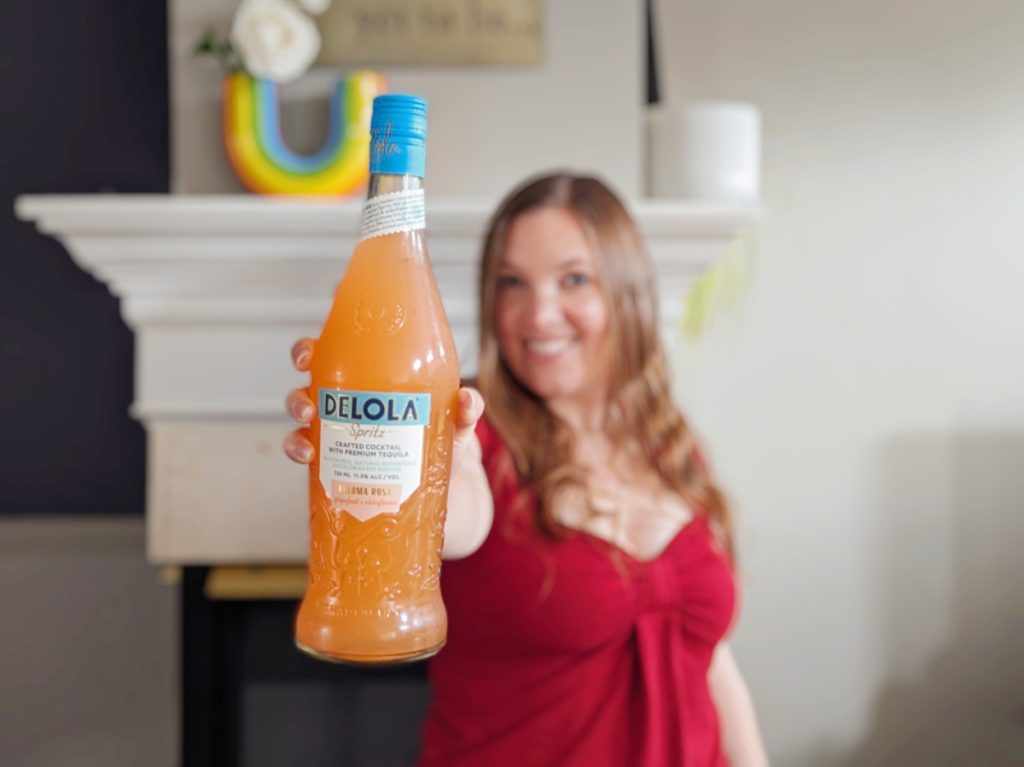
Photo by: Denise M. Gardner
This post is a part of the “Back to Enology” series in which I, Denise Gardner, take time to explain the science behind concepts misunderstood (or mythological) in winemaking practices.
Part 1 discussed Misconceptions around sulfur dioxide additions to wine.
A full reasoning behind this “Back to Enology” series can be found at the end of today’s blog post.
Today, I’m going to dive into the world of formula wines: wines that require formula approval by the TTB, and include ready-to-drink (RTD) cocktails. In the 1980s, 1990s, and maybe early 2000s, many small wineries used formula wines as escape routes for problem wines with noticeable wine flaws. The reason for this was obvious: formula wines were often sweetened and flavored, which minimized the sensory perception of the wine flaw. This market segment provided an outlet for lower quality wines.
However, with the rise of ready-to-drink (RTD) cocktails, formula alcohol products – and possibilities therein – have blown open.
Before we get into it… why are we talking about this here? It’s true that some winemakers or winery brands may have negative opinions regarding the prestige of RTD cocktails or formula wines. Nonetheless, I think it’s fair to discuss these wines. Not talking about formula wines does a disservice to the entire industry, leaving it up to novice “guess work” in competing against breweries and spirits for space within the RTD market. Whether a wine purist likes it or not, this market is not going away. Thus, I believe it behooves us to address the issues within formula winemaking as opposed to arguing over whether or not these wines are real wines.
Truth be told, in my experience, most winemakers struggle with making RTD cocktails/formula wines:
- good,
- stable, and
- commercially scalable.
I personally believe that this is due to a lack of product development training, which is covered in food science curriculums, but not enology curriculums. The set of skills required to make formula wines is quite different than the set of skills necessary to make a varietal grape wine. It may be true that these aren’t “Cabernet Sauvignon” wines capturing the terroir of the region, but it does not dismiss their complexity and the required understanding of science in order to make these wines good, stable, and commercially scalable.
Though, if winemakers truly are the masters of aroma, flavor, and taste that they claim to be, then there should be an underlying appreciation for formula wines. Perhaps the appreciation is not for the product itself, but for the intricacy associated with flavor development and consistency in a shelf-stable wine product. Both products – varietal wine or wine blends, and RTD formula wines – require a firm understanding of flavor chemistry and sensory science. This is because both types of products depend on flavor “working” for that wine in order to be appreciated by consumers and enthusiasts.
Are you ready to learn more with me?
Myth: Formula Wines are Low Quality Wines
A formula wine is a wine that requires formula approval by the TTB prior to development, packaging, and labeling. Some common examples of formula wines include pre-bottled Sangria, Mulled/Spiced Wine, Chocolate Wine, Flavored Sparkling Wine, and so on. As of the writing of this post in 2024, the world of ready-to-drink (RTD) cocktails has somewhat exploded, especially within the U.S. This market includes anything from our traditional formula wines, listed above to hard seltzers, wine spritzers, some low alcohol wines, and pre-made cocktails.
In 2023, this was one of the largest growing market segments in the U.S. As of 2023, the RTD market size was about $942.8 million dollars and is forecasted to continuing growing at record rates (Grand View Research). While dominated by spirit-based companies (more on this in a moment), wine-based RTD’s continue to have market potential.
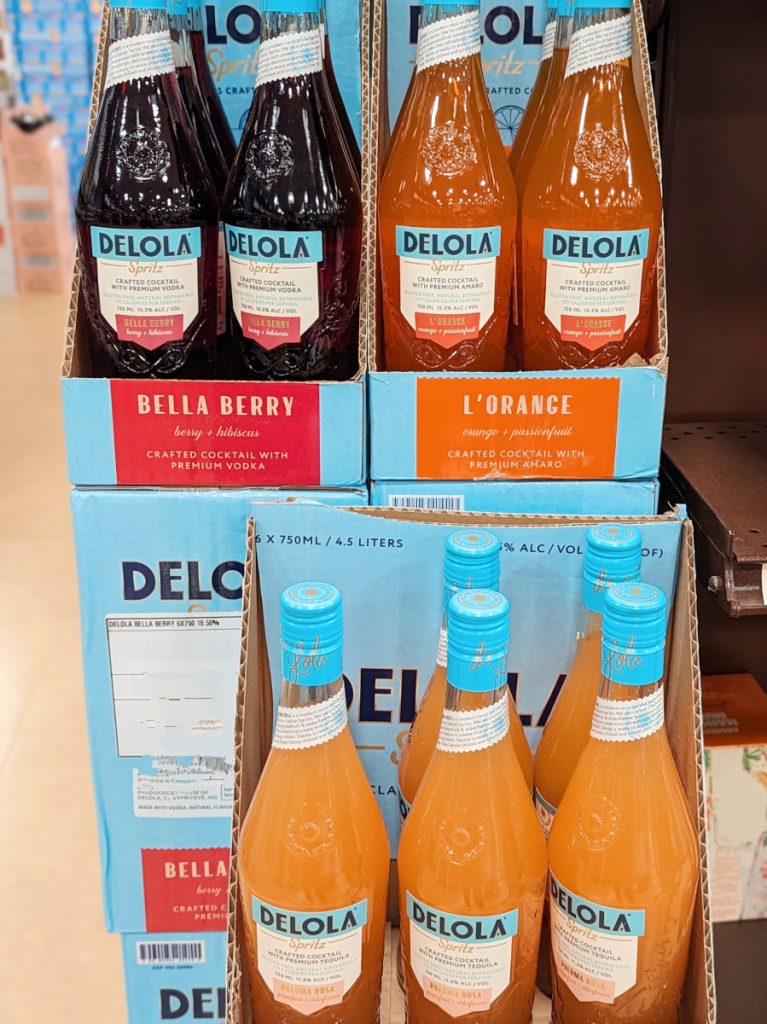
Photo by: Denise M. Gardner
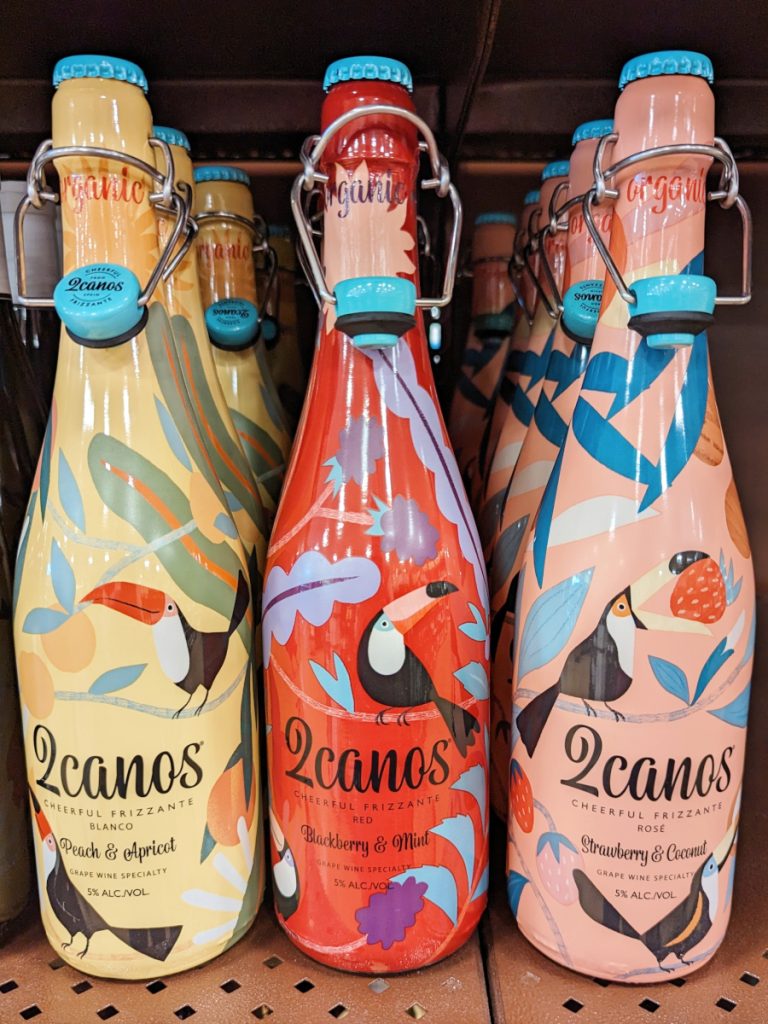
Photo by: Denise M. Gardner
To some degree, the sky is the limit when creating these products. Though, to be fair, many products also come with specific limitations associated with stability, packaging, or required equipment for processing. Unlike the formula wines of the past, today’s formula wines compete with formulaic products / RTD cocktails made by breweries and distilleries, as well. Simply put, this is a gentle reminder that each winery is not only in sale competition with its neighbors, but with the entire national market creating RTD cocktails.
Plus, RTD products are not only for the “unsophisticated” wine consumer like was once believed. Many products, today, are quite sophisticated in their flavor profiles and taste. Thus, beverages within this group can appeal to several different market segments. This insinuates that many of these products could be in direct competition with varietal wines and traditional wine blends in addition to the competition with the RTD cocktail group.
Thus, it benefits wineries creating RTD formula wine products to go beyond their kitchen bench trials and learn the valuable craft of product development for a commercially viable, scalable formula wine.
Challenges with Formula Wines
Many ingredients used for formula wines fall outside the traditional wine ingredients used to make varietal wines or blended grape wines. Traditional ingredients include things like tannins, gums, mannoproteins, MegaPurple/Purple 8000, etc.
Furthermore, the required ingredients for formula products often cause instabilities in wines. Their addition to a grape wine can cause things like:
- Color intensity reduction
- Change in color hue
- Flavor loss
- Changes in flavor
- Acid instabilities
- Physical separation of component parts
- Precipitation of ingredients or components
- Cloudiness
- Packaging instabilities
- Lack of post-packaging longevity (shelf-life)
- Microbial challenges
Unfortunately, unlike many varietal or grape-based wines, consumers have a natural expectation for high-quality, reliably consistent, delicious formulaic wines. (Also, they should probably look cool.) This puts the onus on the winemaker to check these boxes each time the product is made.
However, on the fortunate side, many formulaic RTD products offer opportunities for using the wine cellar more efficiently outside of harvest season. This fact alone can create substantial business growth for a winery operation.
Understanding the Wine and its Formula
Consistency is key in developing a good RTD product. Again, these are the types of wines where consumers have an expectation that each bottle or can opened will remind them of the last.
Starting with a good quality base wine is important here. Remember, your formula wine is now competing against the most popular RTD products on the market (some of which are not even produced by wineries or wine-based). Thus, while there may be a place in your formula wine portfolio for some of the lower quality wines, many of these products have to get made intentionally with exceptional attention to the quality of the base wine. The age old adage of “garbage in, garbage out” applies here: one cannot create a good formula wine from a “garbage” poor quality base wine.
Furthermore, acid chemistry is important. Both pH and TA (titratable acidity) are going to matter for these wines. Titratable acidity and pH are important because pH will dictate the stability of the wine product. TA defines how sour the product will taste. I commonly recommend to my clients that they start identifying the target pH and TA values for whatever product they are making. The more consistent we can keep the acid chemistry, the more likely we are to keep the product’s shelf-life and stability consistent among batches.
Alcohol concentration also matters. Various ingredients used for flavoring or coloring can be chemically influenced by the alcohol concentration. Ingredients recommended for low alcohol (<10% ABV) wines may be different than ingredients recommended for higher alcohol wines (>12% ABV). Plus, keeping the alcohol concentration consistent goes along with consistency. We want the product to be within the same range of alcohol every time it is made.
Maybe creating target values for these chemical parameters feels a little “Franken-wine” to you. But, to be fair, this is often why blending was so prevalent in many traditional winemaking regions: the art of blending is to keep some consistency in acid profile, alcohol concentrations, and flavor profile. Thus, for the wine purists out there, blending is just a diluted form of saying “develop target chemistry values.” (Pun was intended.)
Ingredients for Formula Wines
You aren’t making a formula wine in your kitchen or even on your bench. Yes, lots of trials will be made. In fact, bench trialing ends up being some of the most overwhelming parts of formula wine development for many winemakers. However, the ingredients selected for formula wines require scalability.
Scalability is a heavily discussed topic that is thrown around in the food and beverage industry. Thus, the science behind operations and ingredients is founded in the fact that things can be used to scale. Essentially, as a product grows in popularity, there should be very small changes in the formula (i.e., the product’s recipe) if the formula was solid from the get-go.
In contrast, wineries don’t often think about scalability beyond the needs for more space, larger equipment, and bulk pricing associated with enological supplies. For wineries that take on the challenge of scalability associated with formula wine development, they will likely benefit from the ease of scaling up product volumes as time progresses.
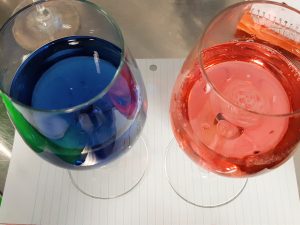
Photo by: Denise M. Gardner
Color is often one of those ingredients that starts to get tricky for wineries that are developing scalable formula wines. In my article, “Formulating Untraditional Wines and Wine Products,” I detail the differences between natural and artificial colors. Furthermore, I outline how some colors are just simply not currently possible using natural colors in a wine. This often goes back to acid chemistry and the wine’s pH. Most natural colors are influenced by the product’s pH. Thus, the pH limits what can get added to a wine in which the pH is usually within the 3.0 – 4.0 range.
But where the concept of ingredient selection gets most interesting for me is with aroma and flavor. (Perhaps this is because my M.S. thesis was on aroma and flavor in wine, and I contemplated the option of flavor science back in my younger days… But that detail aside, flavor development for formula wines is often my favorite part of the process and the least favorite part for many winemakers because they have to create it. The flavor is not necessarily coming from the wine itself. Flavor development in formula wines requires patience and, often, a better understanding of flavor science.)
The number one rule in developing a formula wine is this: the formulated wine does not equal the cocktail you are creating in your home kitchen. Let’s use the most obvious, universal formula wine product, Sangria, as an example for why this is true. We obviously are not dicing and cutting up fruit in the cellar, mixing it in with wine, adding in some extra alcohol, and then throwing that into a bottle that eventually gets placed on the retail shelves in our wine stores.
In fact, anyone that has ever made Sangria at home knows that Sangria doesn’t last for more than a few days. But, why?
The reason for this is because when a non-alcoholic fruit is added into an alcoholic beverage, diffusion of the alcohol from the liquid to the fruit will take place until the alcohol concentration is in equilibrium (meaning that both the fruit and the liquid will have relatively the same alcohol concentration). Thus, over time, the alcohol concentration of the Sangria itself may go down while the alcohol content of the fruit goes up.
But also, some of the fruit’s flavors will also diffuse into the liquid over time, influencing the Sangria’s overall flavor. It’s worth noting that some of these flavors may not contribute a positive influence on the Sangria over time.
Finally, eventually, that fruit is going to spoil. Even though it is in alcohol, contains alcohol, etc., eventually the fruit is not going to taste good.
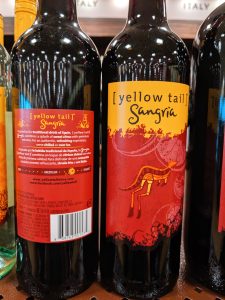
Photo by: Denise M. Gardner
But also, let’s think about wine processing, in general. Wine gets made. Wine gets stabilized. Preservative (SO2) is added. Wine gets filtered. Wine gets packaged.
Filtration is one of the steps used to ensure wine longevity by physically removing the microorganisms that naturally occur in wine. For the most part, filtration is the step that minimizes the risk of spoilage over time. Can a large slice of strawberry or orange get through a filter? No.
And this is, again, where we start to look at scalability and commercial viability of a formulaic wine. This is also why Sangria’s sold in pre-packaged bottles in the wine store are made with added flavor and not made with fruit inside the bottle.
But the Flavor Science…
Ah, yes, the flavors.
The reason why the sky is the limit with most formula wines is because the sky is somewhat the limit for available flavors that can go into a wine. Sure, some may require TTB approval, but many wineries have found ways to make that happen as new flavor ideas in RTD wine cocktails develop.
Flavor can come from multiple sources in the product:
- The wine itself
- Added juices
- Added concentrates
- Added extracts
- Added natural/artificial flavors
The terms juices, concentrates, extracts, and flavors have technical meanings in terms of what they are and how they are processed. From an operational perspective, the technical meaning provides an indication of the ingredient’s strength (hence indicating dosage rates of the ingredient), when it gets added in production, stability, potential influence on alternative components within the wine, and longevity/storage requirements of the ingredient itself.
Most winery operations lean on juices and concentrates to start formulating their formula wines. I find this is because both juices and concentrates are juice-like and are familiar to winemakers. But, again, scalability and operational allowances often become issues with these ingredients.
Furthermore, the use of concentrates requires some thought. Not all concentrates are the same; some come frozen and some are shelf-stable for a specific period of time. The ingredient storage conditions will vary based on the type of concentrate purchased, and not all wineries can support those storage requirements. Some concentrates are clear, and some are hazy/cloudy. These attributes associated with the ingredient contribute to the quality and stability of the wine the concentrate gets added to. And finally, the heavy reliance on concentrates can lead to microbial problems for a winery, in general.
Concentrates are not sterile products. They often have their own microflora associated with them. Many wineries that begin to heavily work with concentrates often experience an emergence of Zygosaccharomyces in their winery operations. Zygosaccharomyces is not a yeast that most wineries want to manage. It is similar to Brettanomyces in that once it is introduced into a winery, it seems impossible to get rid of from the processing space. Problems with Zygosaccharomyces become more prevalent when formulaic wines (or just wines, in general) are canned or put into anaerobic packaging (packaging that lacks oxygen). Zygosaccharomyces has the ability to remain active in packaging conditions without any oxygen. Unlike Saccharomyces or even Brettanomyces, Zygosaccharomyces is not inhibited by sulfur dioxide or potassium sulfate at wine’s maximum allowable dosage rates. That may sound scary enough to keep you from making formulaic wines, but again, I would just argue it’s important to know what you need to know, make appropriate plans for operations, adjust sanitation schedules, and work with a specialist (like yours truly) when developing these products.
Where does this leave you? And my point about formula wines…
Every time I go to the wine store, I browse the formula products. Mainly, this is because I can guess how those wines or products are getting made. But also, I look for problems. For example, finding formula wines in which one “batch” on the shelf varies in appearance. This may not seem like a big deal to you, but when you zoom out and remember that shelves are filled with Stella Rosa, High Noon, White Claw, Malibu, Two Chicks, Cutwater, and Delola with massive marketing campaigns… this small detail will not work in favor for more sales. Customers often expect consistency.
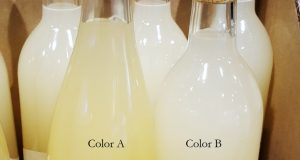
Photo by: Denise M. Gardner
The RTD market is vast. But also, there are a lot of products in the RTD category that are just… not good. These companies could really use some food scientists!
And that’s kind of my point. RTD, formula wines are hard to make well. It requires an understanding of the component parts within the product, a lot of experimentation up front, approval from the TTB before production, and then monitoring stability over time. These challenges become exacerbated if the product goes into trendy packages, such as cans.
I understand you don’t have to take my word for it, especially because I managed to write this post without a good scientific citation, which was not my goal for the “Back to Enology” series. Please understand, I actively work in this sphere daily and have food science degrees; a lot of this information has become somewhat “old hat” for me.
Despite that level of education and experience, there are still things I learn every year when it comes to new innovations and technologies associated with RTD cocktails. That’s how rapidly the production aspect of this market segment is evolving. Because so few people are even talking about the production of RTD cocktails within the industry, I highly doubt most wineries have a clear understanding of all of the things I discussed above. Without this understanding, it is likely that a winery will take a considerable amount of time (maybe even years) to create RTD wine cocktails/formula wines that come with their own set of challenges.
But, you don’t have to fight the good fight alone. There’s a friendly neighborhood winemaking consultant right here, ready to help you. 🙂
Key Take-Aways & Practical Applications
- Formula wines / RTD wine cocktails are sophisticated wine products that are challenging to make well. Don’t guess. Get help. You can get started by signing up for DGW Elite Membership, here.
- Wines in the RTD category are in competition with national RTD cocktails that are produced by other wineries, breweries, and distilleries. This market segment is expected to grow over the 2020’s.
- Most of the ingredients that go into formula wines/RTD cocktails may be unfamiliar to most winemakers. Again, this is where you should seek professional assistance because the set of skills to craft good RTD wine cocktails is different than the skills required to make good varietal wines.
Back to Enology…
To quote physicist Lisa Randall, “You can’t have these executive committees or congressional committees that really understand things. I mean, some things are difficult to understand, and not everyone will understand them. And it’s really important for a scientist to be able to at least get the information out there and have that taken into account. There’s also an idea that, you know, when people talk about science, they’re being elitist. That’s not what it’s about. It’s about understanding the world. It’s something that we want to share. I mean, there’s a wonderful universe out there.”
I’ve recently been listening to the Freakonomics series on Richard Feynman, of the greatest scientists of modern-day era. In the last of this three-part series, The Vanishing Mr. Feynman, there was a large emphasis on the decline of trusting scientists or scientific information.
I have to admit that I gravitated to this podcast series as I, like many other scientists in many scientific fields, have recently found the dissemination of scientific information a rather challenging uphill battle.
In the lowest of times, I have considered completely giving up on communicating enology information, the scientific understanding of winemaking. But in the highest of times, I recognize that I have to continue to communicate this information for those that simply do not know the science that strive to learn the science or that strive to make better wines using well-documented winemaking principles.
Therefore, over the next few months, I’d like to address a series of – what I call – “winemaking myths and misconceptions” based on commonly communicated ideas/opinions by industry members that are often veiled as scientific fact or industry standard.
Instead, I’ll work on coming back to what we know scientifically about each of these topics.
Fair warning: the science is usually more complicated, less definitive, and sometimes not yet determined compared to the common discussions you may hear in the winemaking community.
With that in mind, I think it’s important to remember that very fact. The science is complicated. The science may not be definitive as scientists continue to research and test hypotheses (questions) related to winemaking, and as technologies improve giving scientists access to possibility of researching more hypotheses. And sometimes, the science is not yet conclusive. Sometimes scientists do not know the answers we may be looking for. And that’s okay. Even in the face of “not knowing all,” I have managed to advise many of my clients into making a fair share of good quality wines, or award-winning wines. Of course, there have also been growing and learning opportunities during those times in which we don’t know the answers.
Ultimately, it is the continuous stream of new information associated with enology that led me to enology in the first place. Winemaking, after all, is a continuous educational experience.
Would you like to learn with me?
Resources that Supported this Blog Post:
Grand View Research. Ready To Drink Cocktails Market Size, Share & Trends Report Ready To Drink Cocktails Market Size, Share & Trends Analysis Report By Alcohol Base (Wine-based, Spirit-based), By Distribution Channel (Online, Liquor Stores), By Packaging (Cans, Bottles), By Region, And Segment Forecasts, 2023 – 2030. Available at: https://www.grandviewresearch.com/industry-analysis/ready-to-drink-cocktails-market
The views and opinions expressed through dgwinemaking.com are intended for general informational purposes only. Denise Gardner Winemaking does not assume any responsibility or liability for those winery, cidery, or alcohol-producing operations that choose to use any of the information seen here or within dgwinemaking.com.
